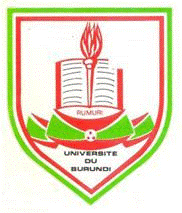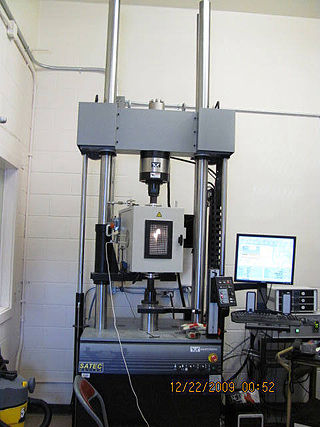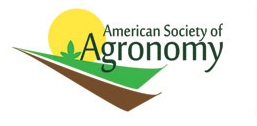
In academic publishing, a scientific journal is a periodical publication intended to further the progress of science, usually by sharing findings from research with readers. They are normally specialized based on discipline, with authors picking which one they send their manuscripts to.

Agronomy is the science and technology of producing and using plants by agriculture for food, fuel, fiber, chemicals, recreation, or land conservation. Agronomy has come to include research of plant genetics, plant physiology, meteorology, and soil science. It is the application of a combination of sciences such as biology, chemistry, economics, ecology, earth science, and genetics. Professionals of agronomy are termed agronomists.
Agroecology is an academic discipline that studies ecological processes applied to agricultural production systems. Bringing ecological principles to bear can suggest new management approaches in agroecosystems. The term can refer to a science, a movement, or an agricultural practice. Agroecologists study a variety of agroecosystems. The field of agroecology is not associated with any one particular method of farming, whether it be organic, regenerative, integrated, or industrial, intensive or extensive, although some use the name specifically for alternative agriculture.
Biodynamic agriculture is a form of alternative agriculture based on pseudo-scientific and esoteric concepts initially developed in 1924 by Rudolf Steiner (1861–1925). It was the first of the organic farming movements. It treats soil fertility, plant growth, and livestock care as ecologically interrelated tasks, emphasizing spiritual and mystical perspectives.
The impact factor (IF) or journal impact factor (JIF) of an academic journal is a scientometric index calculated by Clarivate that reflects the yearly mean number of citations of articles published in the last two years in a given journal, as indexed by Clarivate's Web of Science.

The University of Burundi is a public university located in Bujumbura, Burundi. Founded in 1964, it comprises eight faculties and five institutes and has a student enrollment of approximately 13,000. It is based in three campuses in Bujumbura and a fourth in Gitega. It took its current name in 1977 and is Burundi's only publicly funded university.

The State University of Haiti is one of Haiti's most prestigious institutions of higher education. It is located in Port-au-Prince.

Materials Today is a monthly peer-reviewed scientific journal, website, and journal family. The parent journal was established in 1998 and covers all aspects of materials science. It is published by Elsevier and the editors-in-chief are Jun Lou and Gleb Yushin. The journal principally publishes invited review articles, but other formats are also included, such as primary research articles, news items, commentaries, and opinion pieces on subjects of interest to the field. The website publishes news, educational webinars, podcasts, and blogs, as well as a jobs and events board. According to the Journal Citation Reports, the journal has a 2020 impact factor of 31.041.

Building science is the science and technology-driven collection of knowledge in order to provide better indoor environmental quality (IEQ), energy-efficient built environments, and occupant comfort and satisfaction. Building physics, architectural science, and applied physics are terms used for the knowledge domain that overlaps with building science. In building science, the methods used in natural and hard sciences are widely applied, which may include controlled and quasi-experiments, randomized control, physical measurements, remote sensing, and simulations. On the other hand, methods from social and soft sciences, such as case study, interviews & focus group, observational method, surveys, and experience sampling, are also widely used in building science to understand occupant satisfaction, comfort, and experiences by acquiring qualitative data. One of the recent trends in building science is a combination of the two different methods. For instance, it is widely known that occupants’ thermal sensation and comfort may vary depending on their sex, age, emotion, experiences, etc. even in the same indoor environment. Despite the advancement in data extraction and collection technology in building science, objective measurements alone can hardly represent occupants' state of mind such as comfort and preference. Therefore, researchers are trying to measure both physical contexts and understand human responses to figure out complex interrelationships.

The Soil Science Society of America (SSSA), is the largest soil-specific society in the United States. It was formed in 1936 from the merger of the Soils Section of the American Society of Agronomy and the American Soil Survey Association. The Soils Section of ASA became the official Americas section of the International Union of Soil Sciences in 1934, a notable role which SSSA continues to fulfill.

The American Society of Agronomy (ASA) is a scientific and professional society of agronomists and scientists of related disciplines, principally in the United States but with many non-U.S. members as well.

Theoretical and Applied Genetics is a peer-reviewed scientific journal published by Springer Science+Business Media. The journal publishes articles in the fields of plant genetics, genomics, and biotechnology. It was established in 1929 as Der Züchter, which name was changed to the current one in 1968. Previous editors include H. Stubbe (1946–1976) and H. F. Linskens (1977–1987). The journal publishes only original research articles.
Frontiers Media SA is a publisher of peer-reviewed, open access, scientific journals currently active in science, technology, and medicine. It was founded in 2007 by Kamila and Henry Markram, and has since expanded to other academic fields. Frontiers is based in Lausanne, Switzerland, with other offices in London, Madrid, Seattle and Brussels. In 2022, Frontiers employed more than 1,400 people, across 14 countries. All Frontiers journals are published under a Creative Commons Attribution License.

Abdelkader Aamara is a Moroccan politician of the Justice and Development Party and its Chief Treasurer. On 3 January 2012, he was nominated as the Minister for Industry, Trade and New Technologies in the cabinet of Abdelilah Benkirane. Between 2013 and 2016, he was the Minister for Energy, Mines, Water and Environment and since 5 April 2017, he has been the minister for Equipment, Transport and Water Logistics in the cabinet of El Othmani. Between 2nd & 20th August 2018, he took an interim position as the Minister for Economy and Finance following the firing of Mohamed Boussaid. He has served as MP for Salé since 2002 and is a professor at the Hassan II Institute of Agronomy in Rabat, from which he graduated in 1986.
The University Ranking by Academic Performance (URAP) is a university ranking developed by the Informatics Institute of Middle East Technical University. Since 2010, it has been publishing annual national and global college and university rankings for top 2000 institutions. The scientometrics measurement of URAP is based on data obtained from the Institute for Scientific Information via Web of Science and inCites. For global rankings, URAP employs indicators of research performance including the number of articles, citation, total documents, article impact total, citation impact total, and international collaboration. In addition to global rankings, URAP publishes regional rankings for universities in Turkey using additional indicators such as the number of students and faculty members obtained from Center of Measuring, Selection and Placement ÖSYM.

Agrivoltaics,agrophotovoltaics,agrisolar, or dual-use solar is the simultaneous use of areas of land for both solar photovoltaic power generation and agriculture. The coexistence of solar panels and crops implies a sharing of light between these two types of production, so the design of agrivoltaic facilities may require trading off such objectives as optimizing crop yield, crop quality, and energy production. However, in some cases crop yield increases due to the shade of the solar panels mitigating some of the stress on plants caused by high temperatures and UV damage.
The Journal of Environmental Quality is a bimonthly peer-reviewed scientific journal publishing original research in the area of anthropogenic impacts on the environment, including terrestrial, atmospheric and aquatic systems. According to Journal Citation Reports, the journal has a 2020 impact factor of 2.751. It was established in 1972 as the first joint publication of the not-for-profit American Society of Agronomy, Crop Science Society of America, and Soil Science Society of America. The journal is currently published by the three societies in partnership with Wiley. The journal was a quarterly publication for the period of 1972 to 1993. Since 1994 it has been a bimonthly publication journal. Since 2013, it is available online only.
Agronomy Journal is a peer-reviewed scientific journal published by American Society of Agronomy. The journal publishes articles related to soil science, crop science, agroclimatology and agronomic modeling, production agriculture, and software.

France université numérique (FUN) is the French national platform to promote the use of massive open online courses (MOOCs).
The Institut National Polytechnique Félix Houphouët-Boigny (INP-HB) is a public polytechnic institute of higher education, research and production in Yamoussoukro in Côte d'Ivoire.











